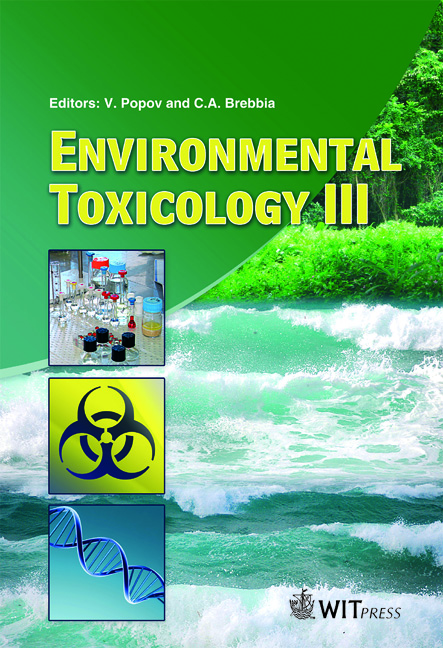Correlation Between Cluster Analyses Of Salmonella Strains Isolated From Diarrhetic Patients In Kuwait And Biofilm Formation
Price
Free (open access)
Transaction
Volume
132
Pages
9
Page Range
67 - 75
Published
2010
Size
381 kb
Paper DOI
10.2495/ETOX100071
Copyright
WIT Press
Author(s)
A. Al-Mousawi, A. Eissa, F. Abu-Zant, H. Drobiova, I. Al-Saif & E. Al-Saleh
Abstract
Salmonella is a highly diverse group of strains that belong to the Enterobacteriaceae and can cause many infections, such as diarrhea, pyrexia and septicemia, in humans and animals. One important virulence factor is the ability to form biofilm. In the present study, the potential to form biofilms by Salmonella strains isolated from diarrhetic patients was investigated and correlated with the strain type. Isolated bacteria were identified by sequencing of 16S rDNA. The potential of Salmonella to form biofilms was determined using bioluminescence microbial cell viability assay. In addition, the metabolic fingerprints of Salmonella were determined using the Biolog system, following the manufacturer’s instructions. Cluster analysis based on catabolic activity and 16S rDNA of isolated strains showed the tendency of most Schwarzengrund (66.7% - 70%) and E5 strains (85%) to cluster individually, which implied the high distinctive genetic background of Schwarzengrund and E5 strains. On the other hand, Heidelberg and Paratyphi strains were clustered among other stains, which reflected the genetic resemblance of these strains to other Salmonella strains. The biofilm studies showed the high potential of the majority of E6 (60%) and Heidelberg (66.7%) strains to form biofilms, while low potential to form biofilms was displayed by 78% of Schwarzengrund strains. Keywords: Salmonella, biofilm, 16S rDNA sequencing, metabolic fingerprint.
Keywords
Salmonella, biofilm, 16S rDNA sequencing, metabolic fingerprint





